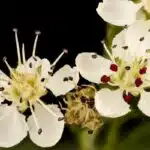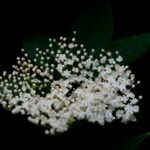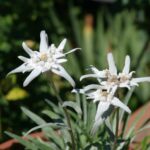Have you ever stopped to admire the beauty of a Black-Eyed Susan? This cheery yellow flower is incredibly easy to grow and take care of, so why not add it to your garden today? With its bright and sunny face, the Black-Eyed Susan is the perfect way to bring a little bit of sunshine to any home. Here’s how you can grow and care for these lovely flowers.
The Black-Eyed Susan is native to North America, and it can be found growing in gardens across the continent. It’s a hardy plant that thrives in many different climates, making it an ideal choice for gardeners who want something that will last through the seasons. The best part is that it’s incredibly easy to take care of; just give it enough sunlight and water, and you’ll have yourself a thriving flower bed!
If you’re looking for a way to give back to your community and share some joy with others, growing Black-Eyed Susans is an excellent choice. When planted near other flowers, they help create vibrant ecosystems that attract local wildlife like hummingbirds, bees and butterflies. Plus, they make great gifts for friends or family members who could use some cheering up! With this guide on how to grow and care for them, you can start adding some sunshine into your life today!
What Is A Black-Eyed Susan?
The Black-Eyed Susan is a classic wildflower that has been around for centuries, but in recent years it has become increasingly popular as gardeners rediscover its beauty and resilience. The name itself evokes a sense of wonder and nostalgia, so it’s no surprise that many people want to know more about this beloved flower. But before they can learn how to grow and care for Black-Eyed Susan, they need to understand what exactly it is.
Black-Eyed Susans are members of the Asteraceae family and related to daisies and sunflowers. They have bright yellow petals with a signature dark center, giving them their namesake “black eye.” The plants reach anywhere from 1–3 feet tall depending on soil conditions and other environmental factors. They tend to prefer sunny locations like open fields or meadows, although they can also do well in lightly shaded areas such as gardens.
These flowers are incredibly hardy and easy to cultivate; they’ll thrive in almost any soil type so long as it drains well. And their blooms begin in midsummer and last until the first frost, making them an excellent choice for gardeners who want vibrant color throughout the season. With proper care — plenty of light, water when necessary, occasional deadheading — Black-Eyed Susans will give you months of beauty year after year. Planting these cheerful blooms is sure to bring a bit of joy into your day!
Where To Plant Black-Eyed Susan
When it comes to planting your black-eyed susan, location is key. These hardy flowers thrive in full sun, so make sure to choose a spot that receives at least six hours of direct sunlight each day. They also prefer well-drained soil with a neutral pH balance and will do best if planted in an area where they won’t be disturbed from the elements. And because they’re drought resistant, these flowers can handle periods of dryness without needing additional irrigation.
If you live in a cold climate, here’s another tip: you may want to consider planting your black-eyed susans in containers instead of directly in the ground. This way, you can move them indoors during the winter months to keep them safe from harsh temperatures and heavy snowfall. That being said, be careful not to overwater the plants while they’re contained; too much moisture can lead to root rot and other issues.
No matter where you plant them, just remember that these blossoms are an excellent addition to any garden or home landscape. With their vibrant colors and hardy nature, they make for a beautiful statement piece—and will bring years of delight as they come back year after year! And with proper care, they’ll continue blooming throughout the summer season and beyond.
When To Plant Black-Eyed Susan
Now that you know where to plant black-eyed susan, it’s time to consider when. If you’re looking for the best time to start planting your black-eyed susans, you’ll be glad to know that there are several options available. It really depends on what zone you live in and how much sunlight your plants will get.
For most people who live in zones 3-9, the ideal time to plant is early spring. That way, the plants can get a good start before summer arrives and they can take advantage of the cooler temperatures. However, if you live in a warmer climate or have more shade than sun, late spring or early summer may be better times to start planting.
No matter what your local climate is like, it’s important to keep an eye out for signs of frost before planting your black-eyed susans. If frost is forecasted during the night after planting, cover your plants with a sheet or cloth so they don’t freeze over. With these simple tips in mind, you can ensure that your black-eyed susans get off to a great start!
Now that you know when to plant black-eyed susan, it’s time to find out how.
How To Plant Black-Eyed Susan
Choosing when to plant your black-eyed susan is the easy part; how to plant them is a bit more difficult. To get the most out of your plants, you’ll need to know exactly how and where to put them in the ground. Let’s explore this together!
When it comes to planting black-eyed susans, there are a few things that can help make the process easier. First, you’ll want to choose an area that has plenty of sunlight and well-drained soil. This will ensure that your flowers stay healthy and vibrant all season long. Additionally, it’s important to dig a hole that is slightly larger than the root ball of the plant. This will give the roots room to spread out and grow into their new home.
Once you’ve prepared the soil, it’s time to add your plants! Be sure to carefully remove any roots from around the base of each plant before placing them into their respective holes. Then gently firm down the soil around each one before watering thoroughly. It’s also helpful to apply mulch around plants for extra protection against weeds and pests.
TIP: Make sure not to over water or over fertilize your black-eyed susans as this can lead to root rot or other issues with growth. With proper care, they should thrive in no time at all!
Soil Requirements For Black-Eyed Susan
Starting a garden of vibrant blooms, like black-eyed susan, can be an exciting undertaking. With the right soil conditions, you can enjoy a beautiful display that will last all summer long. Let’s get digging!
The soil requirements for black-eyed susan are relatively simple:
- It should be well-drained yet still moist and nutrient-rich soil;
- Amend the soil with compost to ensure good drainage;
- Add organic matter to provide nutrition and improve fertility;
- Test the pH levels of your soil as this flower prefers slightly acidic soils.
Not only does choosing the right type of soil affect the growth and health of your flowers, but it also helps protect them from disease or pests. Knowing how to properly prepare the ground for planting will ensure your flowers thrive now and in future seasons. It’s worth taking extra care when preparing the soil for black-eyed susan as it will make all the difference in their growth potential.
By following these tips, you’re sure to have a garden full of vibrant blooms that will bring charm and beauty to your outdoor spaces. Now that we’ve covered what type of soil is best suited for black-eyed susans, let’s look at what kind of sun they need…
Sun Requirements For Black-Eyed Susan
Sunshine is a crucial component for growing and caring for black-eyed susan. Sunny spots in the garden lend to lush, thriving flowers that bring beauty and brightness to your outdoor space. To ensure these blooms can reach their peak potential, it’s important to remember six simple steps related to sun exposure.
Starting with the soil, planting black-eyed susan in well-draining loam that has been enriched with organic matter will give them the best chance of success. The second step is to provide plenty of sunlight – four or more hours of direct sun every day is ideal for these plants. In areas with very intense heat, they may need protection from mid-day glare. For those in cooler climates, giving them a bit of shade during the hottest parts of the day can help retain moisture and protect them from burning.
Next up, spacing these plants appropriately will also help them thrive. Planting too close together can lead to overcrowding and reduce airflow which can create an environment prone to disease and pests – so avoid this by leaving enough room between each bloom when planting. Additionally, be sure to turn or rotate containers regularly so they’re not getting too much light on one side while remaining shaded on the other side. Following these guidelines should ensure your black-eyed susans get all the sunshine they need!
Overall, understanding sun requirements for black-eyed susan is key if you want your blooms to reach their full potential and enjoy many years of vibrant beauty in your garden. With proper placement and care, you’ll have gorgeous flowers that add a pop of color throughout the summer months! Now let’s move on to discussing water requirements for these beautiful blooms…
Water Requirements For Black-Eyed Susan
Watering black-eyed susans is an important part of keeping them healthy and happy. It’s not difficult to do, but there are a few things to keep in mind for the best results:
• Water your plants as soon as their soil begins to feel dry. • Make sure the water you use is at room temperature. • Be aware of your local climate when deciding how often to water your plants.
The amount of water you should give your black-eyed susans depends on where they’re planted and the time of year. During the summer months, when it’s hot and dry, they may need more frequent watering than during cooler times of year. It’s also important to make sure that their soil isn’t soggy; if it is, you should reduce the amount of water you give them.
To ensure that black-eyed susans get enough moisture without being over-watered, consider using a soaker hose or drip irrigation system. These tools can help provide consistent hydration while minimizing runoff or evaporation that can occur with manual watering methods.
These tips will help keep your black-eyed susans looking great! Next up, let’s discuss fertilizer – another essential component for keeping these plants thriving!
Fertilizing Black-Eyed Susan
Fertilizing your Black-Eyed Susan plants is key to maintaining their health and long-term beauty. But how can you make sure it’s done right? Here are three tips for fertilizing your Black-Eyed Susans that will help keep them looking their best:
First, choose a fertilizer specifically designed for flowering plants. A balanced fertilizer with equal parts nitrogen, phosphorus and potassium is best, as it will provide the nutrients needed for healthy foliage growth and beautiful blooms. Be sure to follow the directions on the package, as applying too much fertilizer can be damaging to these plants.
Second, apply at least once per season around early spring and late summer. This will ensure that your Black-Eyed Susan plants get the nutrition they need throughout the year. Adding a layer of compost or aged manure before applying the fertilizer can also help boost nutrients in the soil.
Finally, water regularly after fertilizing to help move nutrients down into the root system. When watering Black-Eyed Susans, try to avoid getting their leaves too wet as this could cause foliage diseases. Now that you’re equipped with these tips for fertilizing Black-Eyed Susans, you’ll be able to keep them looking beautiful all season long!
Controlling Weeds Around Black-Eyed Susan
Coincidentally, controlling weeds around black-eyed susan is just as important as fertilizing it. Weeds can compete for nutrients and space, hindering a plant’s growth. To keep your black-eyed susans healthy and thriving, you’ll need to take action against weeds.
There are a few ways to control weeds without using herbicides. Hand weeding is the most basic type of weed control. It requires patience and effort, but it’s effective when done correctly. It’s also the safest option for your garden since there’s no risk of chemicals damaging the plants or soil. Mulching is another way to reduce weed growth. You can use several different types of mulch such as straw or grass clippings, which will help prevent weed seeds from germinating in the soil and spreading throughout your garden.
Finally, you can also cover the soil with landscape fabric or plastic sheets to block sunlight from reaching weed seeds that may be present in your garden bed. This helps prevent them from growing and becoming a nuisance in your garden beds. With these methods, you should be able to keep weeds in check while still allowing your black-eyed susans to grow strong and healthy!
Common Diseases Of Black-Eyed Susan
Unfortunately, black-eyed susans aren’t immune to disease. Like any other plant, they can suffer from an array of diseases. It’s important to recognize the signs of disease and take steps to combat it.
The most common diseases associated with black-eyed susans are powdery mildew and rust. Powdery mildew is a white, powdery fungus found on the leaves and stems of plants. Rust appears as reddish-brown spots on the leaves and stems. Both can be treated with fungicide, but it’s best to prevent them in the first place by ensuring your plants get enough water and sunlight.
To keep your black-eyed susans healthy, make sure they’re planted in well-draining soil and are receiving at least six hours of direct sunlight each day. Pruning away dead or diseased parts of the plant also helps keep it healthy. If you do find your plants have developed a disease, take prompt action as soon as possible to contain it before it spreads further. With some care and attention, you can ensure your black-eyed susans stay healthy throughout their lifecycle!
Knowing how to identify common diseases is just one part of growing black-eyed susans; now let’s look at another important aspect: common pests associated with these beloved flowers...
Common Pests Of Black-Eyed Susan
Summer is a beautiful time of year, with its bright colors and warm sunshine. Black-eyed Susans are one of the most iconic flowers of this season and can bring cheer to any garden. However, these vibrant blooms require a certain level of care in order to stay healthy and avoid common pests.
Caring for black-eyed Susans is an important part of keeping them looking their best. Here are some tips on how to deal with the most common pests:
•tInsects: otKeep a watchful eye out for aphids, beetles, caterpillars, mites, and other insects that could cause damage or spread disease. otRemove any infested plants from your garden to prevent any further damage or spread. otUse natural insecticides or traps to keep the population under control.
• Diseases: otCheck regularly for signs of powdery mildew or leaf spot. otRemove any diseased leaves from the plant as soon as possible to prevent further spread. otApply fungicides if necessary in order to stop the spread and cure the plant.
• Other Pests: otBe aware of rabbits and deer that may feed on your black-eyed Susans if they come too close to them. otInstall fencing around your garden area if necessary in order to keep animals away from your plants. otUsing repellents can also be helpful when dealing with these types of pest problems.
By taking proactive steps such as these, you can protect your plants from common pests while still enjoying their beauty throughout the summer months! With diligent attention and consistent care, you can ensure that your black-eyed Susans will remain healthy and thriving all season long—and beyond! As we move into deadheading season, you’ll be well prepared for whatever comes next!
Deadheading Black-Eyed Susan
Deadheading black-eyed susan, a.k.a. coneflower, is an easy task that will keep your garden looking tidy and help your flowers to continue blooming throughout the summer months! It’s also a great way to give these perennials an extra boost of energy so they can thrive in the heat. Not only does deadheading encourage more blooms, but it also helps prevent plants from getting leggy and floppy over time.
To begin, gently pinch off any spent blooms or seed heads with your thumb and forefinger right above where the flower meets the stem. Doing this encourages new growth and keeps plants looking neat and tidy all season long. If you’re feeling ambitious, you can also give plants a light trim by cutting back stems that have become too long or unruly. This will help promote bushier growth in the next season as well!
Deadheading isn’t just beneficial for looks; it’s also a great way to ensure that your coneflowers are getting all of the nutrients they need for healthy development. Removing dead blooms helps save energy for other parts of the plant that are growing and developing – like new buds and foliage – which can lead to larger flowers with vibrant colors as well! So don’t forget to lend some TLC to your black-eyed susans; it’ll pay off in spades come bloom time! Now let’s look into propagating these showstoppers…
Propagating Black-Eyed Susan
Growing your own Black-Eyed Susans can be an amazing experience, if you know how. Propagation is the process of taking a cutting from a parent plant and growing it into a new one. It’s not as hard as it sounds, so let’s explore what you need to know to get started.
For starters, you’ll need to have some patience! Growing Black-Eyed Susans from cuttings takes time and effort, but the results are totally worth it. Plant your cuttings in moist soil and keep them in an area with indirect sunlight – too much light can dry them out quickly. You may also want to use rooting hormone to increase the likelihood of success. Make sure that your cuttings are taken from healthy plants; this will help ensure that they start off on the right foot.
Caring for your new Black-Eyed Susans doesn’t end once they’ve been planted: you’ll still need to water them regularly and make sure that their soil stays moist. If you keep up with these steps, you should be rewarded with beautiful blooms in no time! With just a bit of effort, you can have gorgeous flowers right in your own backyard.
Now that we’ve looked at propagating Black-Eyed Susans, it’s time to move onto winterizing them – a key step in keeping them happy year round!
Winterizing Black-Eyed Susan
Winterizing black-eyed susan is an important part of caring for this beloved flower. Did you know that the black-eyed susan can tolerate a full range of temperatures, even surviving in zone 3? This makes it a great choice for outdoor landscaping! To winterize your black-eyed susan, the first step is to understand its growing season and when to deadhead the flowers. Deadheading will help encourage new blooms, as well as prevent unwanted reseeding.
Next, you’ll want to feed your plants with a slow-release fertilizer during their active growing season. This will help ensure they get all the nutrients they need and provide them with the energy they need to survive through the winter months. Additionally, it’s important to mulch around the plants in late fall or early winter to help insulate them from extreme cold temperatures.
Finally, make sure your plants are well watered before winter sets in and then leave them alone until spring arrives – this will give them time to prepare for their dormancy period without any interference from you! TIP: If you’re looking for a low maintenance flower that thrives in temperate climates, look no further than the black-eyed susan!
Landscaping Ideas With Black-Eyed Susan
Now that you know how to grow and care for black-eyed susan, what can you do with them? Black-eyed susan is a stunningly beautiful flower that can bring life and beauty to any garden or landscape. It’s time to get creative and think about the different ways to use this vibrant flower in your landscaping ideas!
One of the best things about black-eyed susan is its versatility. You can place them as a border around your garden, creating an eye-catching contrast between the bright yellow petals and green foliage. You could also add pops of color in beds or containers by planting them in clusters or as a single specimen.
Black-eyed susans are also great for attracting pollinators like butterflies and bees, so why not create a butterfly garden? Planting other pollinator friendly flowers alongside your black-eyed susans will create a perfect haven for these important creatures. The result will be a colorful display that adds life to your outdoor space all season long!
Creating a landscape with black eyed susans is sure to bring joy each time you look at it. Not only does it bring beauty and color into your yard, but it also attracts helpful pollinators that contribute to the health of your garden. With so many options for incorporating black eyed susans into your landscaping ideas, there’s no limit to what you can create!
Frequently Asked Questions
How Long Do Black-Eyed Susans Live?
Black-eyed Susans are like golden beacons of hope in a garden! Their bright yellow petals and deep center evoke a feeling of happiness and joy that is hard to ignore. But how long can these gorgeous flowers live?
When it comes to the longevity of Black-eyed Susans, they can last for several years when planted correctly. These flowers are easy to care for and will thrive with regular waterings and fertilization. They will also need full sun exposure or at least six hours of direct sunlight each day. Once they become established, they don’t require much attention or maintenance, so you can enjoy the beauty of these blooms for many years.
If you want your Black-eyed Susans to last more than one year, make sure you deadhead them regularly by cutting off the spent flowers. This will encourage new growth and blooms throughout the season. Additionally, mulching around the base of the plant helps retain moisture and keep weeds from taking over. With just a few simple steps, you can enjoy a field of beautiful Black-eyed Susans in your garden for years to come!
Can Black-Eyed Susans Be Grown In Containers?
Growing Black-Eyed Susans in containers can be a great idea, particularly for those with limited outdoor space! Whether you are just starting out or have been gardening for years, this vibrant flower is sure to make an impact on your garden. Here are three key benefits of growing Black-Eyed Susans in containers:
Convenience: Growing Black-Eyed Susans in containers simplifies the process of planting and caring for them; no soil preparation is needed and it is easy to move them around if necessary.
Adaptability: Containers provide extra space for more plants and help conserve water by preventing evaporation. They also allow you to adjust the soil type depending on what your flowers need.
Versatility: Containers come in various shapes and sizes, meaning you can choose the one that best suits your needs. The options are endless – from small decorative pots to large planters – so you can create a unique display that’s tailored to your garden.
No matter which way you choose to grow these beautiful blooms, they will add a splash of color and energy to any outdoor area. With proper care, these cheerful flowers will bring years of enjoyment with their bright petals and sunny disposition!
Are Black-Eyed Susans Attractive To Butterflies?
Are black-eyed susans attractive to butterflies? Absolutely! This bright and cheerful flower is a favorite amongst gardeners due to its vibrant color and the fact that it’s irresistible to certain pollinators. Here are five reasons why black-eyed susans are a must-have for any butterfly garden:
•They produce large, daisy-like flowers that come in shades of yellow, orange, and brown. •The petals are made up of a mixture of both ray and disc florets which make them perfect for attracting nectar-seeking butterflies. •They provide an abundant source of nectar throughout the growing season. •Black-eyed susans can be easily grown in containers or in garden beds. •Their long stems make them ideal cut flowers for bouquets.
When it comes to butterfly gardens, nothing adds more beauty and charm than these bold blooms. Not only do they attract beautiful winged friends, but they also look great against a backdrop of evergreens or colorful perennials. For those looking for a low maintenance way to bring life into their outdoor space, black-eyed susans are the perfect choice! Plus, with proper care, they can continue to bloom year after year – giving you plenty of opportunities to admire their beauty from spring through fall. So why not add some color and charm to your garden with this stunning flower?
Can Black-Eyed Susans Tolerate Shade?
When it comes to garden plants, black-eyed susans are a favorite! But do they tolerate shade? Absolutely! This hardy flower is both beautiful and versatile.
Though black-eyed susans prefer full sun, partial shade is okay too. They’ll still thrive with just four hours of sunlight each day. Planting them in partial shade can also help protect the blooms from hot summer temperatures.
No matter what your garden looks like, you can be sure that black-eyed susans will bring beauty and color to your outdoor space. They’re easy to grow and maintain, making them an excellent choice for anyone looking to brighten up their yard or garden.
Are Black-Eyed Susans Deer Resistant?
Black-eyed susans are quite the showstoppers in any garden. With their bright yellow and orange faces, they are sure to draw attention from passersby. But one question that many gardeners have is whether or not black-eyed susans are deer resistant.
The good news is that black-eyed susans are deer resistant, as long as they have enough room to grow properly. They can withstand a wide range of climates and soil types, making them an ideal choice for landscaping projects. Additionally, since they don’t require a lot of maintenance, they’re perfect for those who want low-maintenance gardens.
So if you’re looking to add some color and life to your outdoor space while keeping deer away, planting black-eyed susans could be the perfect solution! Not only are they beautiful but they also happen to be deer resistant – what more could you ask for? So go ahead and give them a try – you won’t regret it!
Conclusion
Black-eyed Susans are a beautiful and resilient flower that will add color to any sunny garden. With the right care, they can live for several years and require very little effort or maintenance. Not only do they attract butterflies and other pollinators, but they are also resistant to deer damage. Although Black-eyed Susans prefer full sun, they can tolerate some shade as well. Furthermore, they can be grown in containers or planted directly in the ground.
In conclusion, Black-eyed Susans are a wonderful addition to any garden. They are easy to grow and maintain, while adding color and beauty throughout the summer months. Their cheerful yellow flowers bring joy to all who behold them and make every walk through the garden a delight. So if you’re looking for an attractive flower with minimal care requirements, then Black-eyed Susans are your best bet!





























